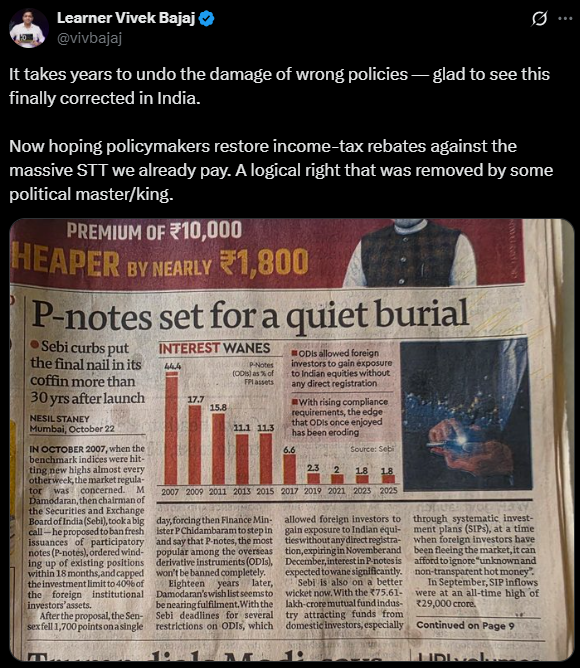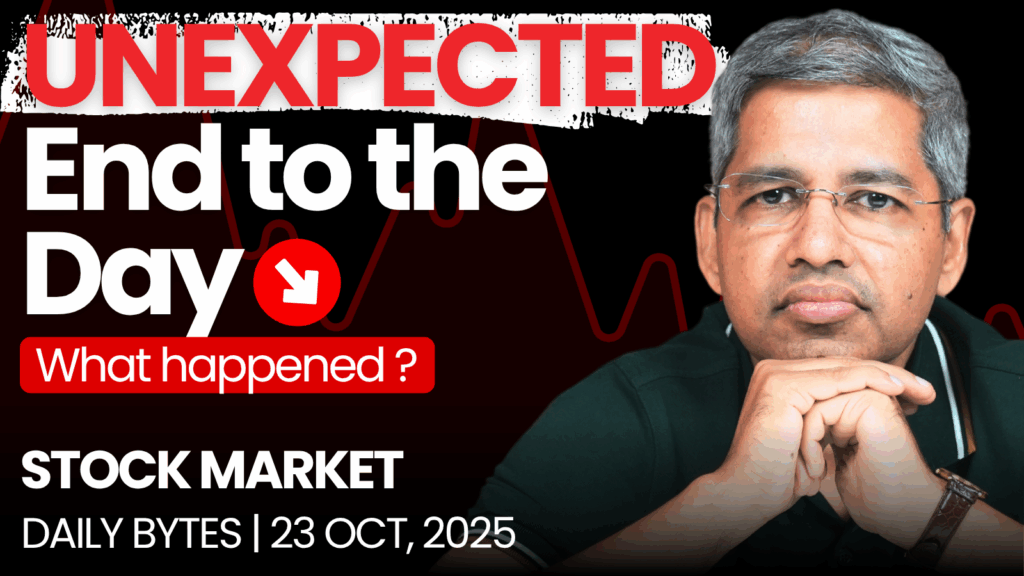Where is the market headed?
Optimism filled the air as many investors expected the much-awaited US-India trade deal to be finalized soon. Early in the day, market sentiment was upbeat, with talks of new highs circulating among traders. However, as noon approached, the mood flipped sharply.
A massive sell-off wiped out all the morning gains, leaving the markets flat by the close. This sudden reversal served as yet another reminder that markets often do what people least expect. Many traders were caught off guard by the sudden dip, as the euphoria turned into surprise and confusion by the end of the session.
Market Overview
Looking at the charts, the Nifty opened strong at 26,104 but closed nearly 250 points lower from the top, erasing all intraday gains to end almost flat at just -0.09%. The rally seemed stretched, which likely explained why the market couldn’t sustain higher levels.
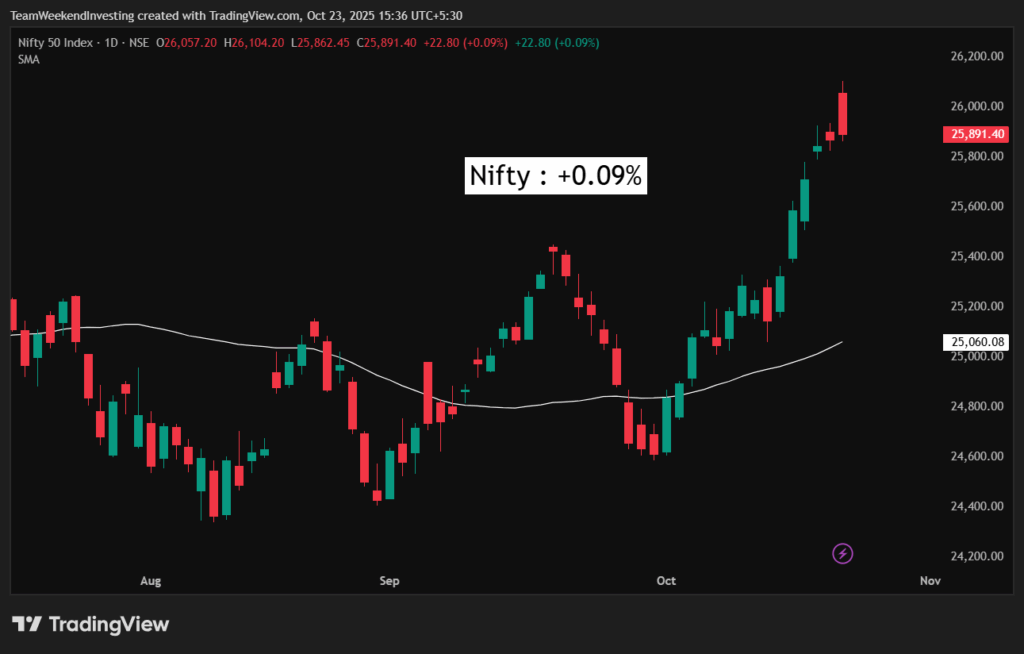
Nifty Next 50
The Nifty Junior did not show any major movement either, staying within the previous day’s range and closing marginally lower at -0.12%.
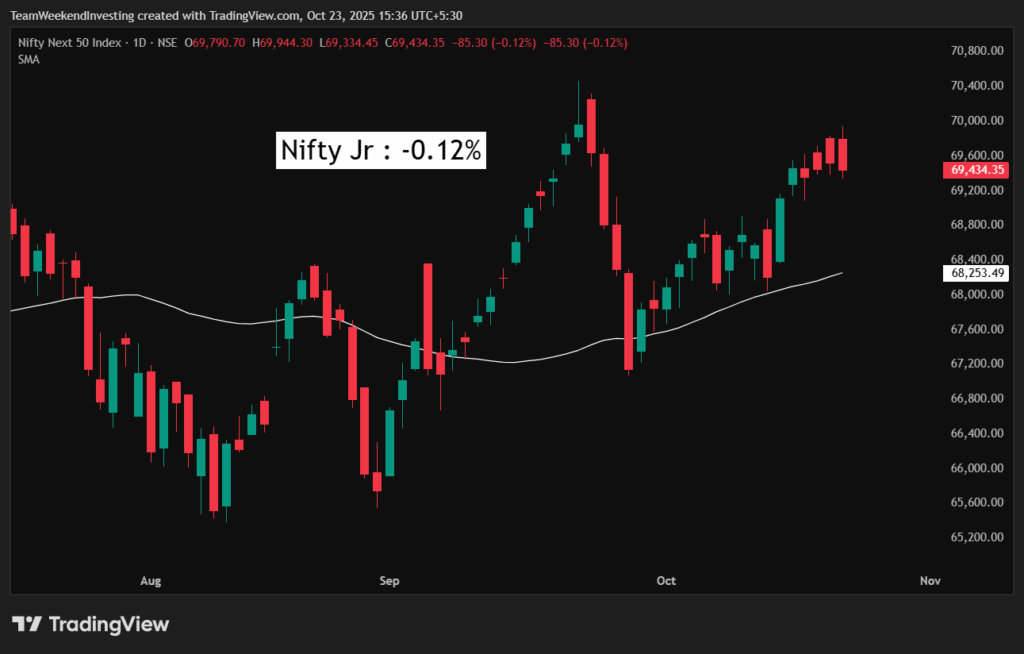
Nifty Mid and Small Cap
Midcaps and smallcaps also lost ground, down 0.15% and 0.24% respectively, while the Nifty Bank managed only a modest gain of 0.12%.
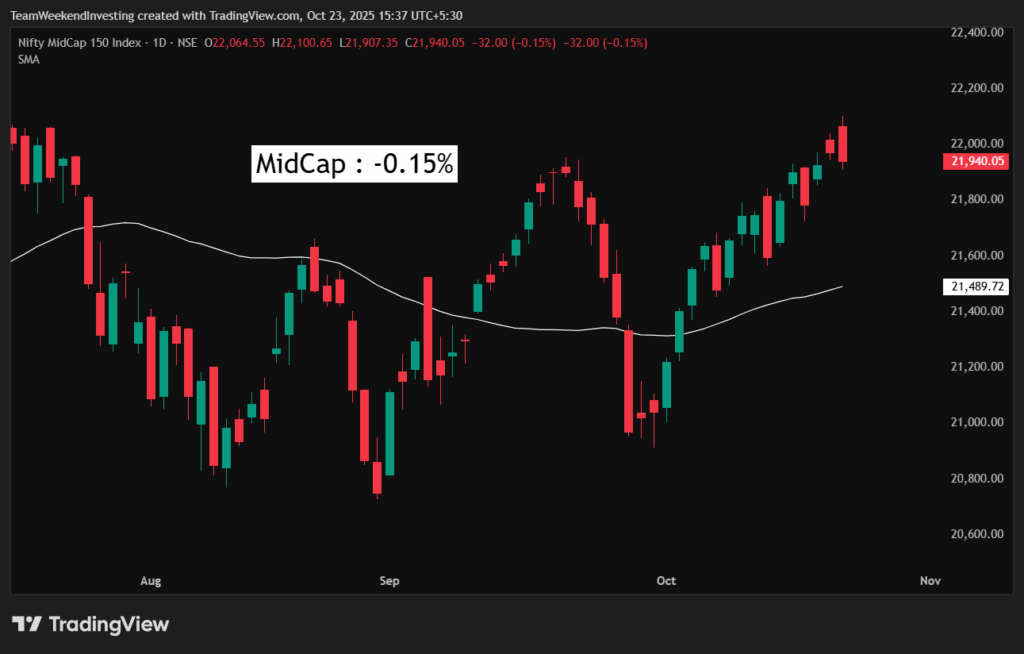
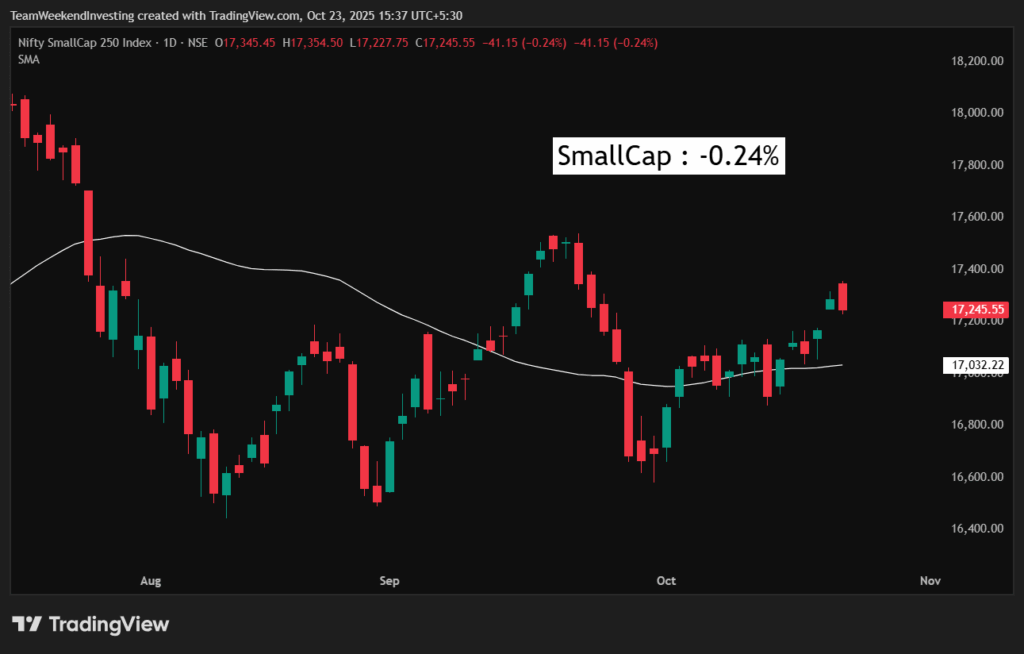
Bank Nifty
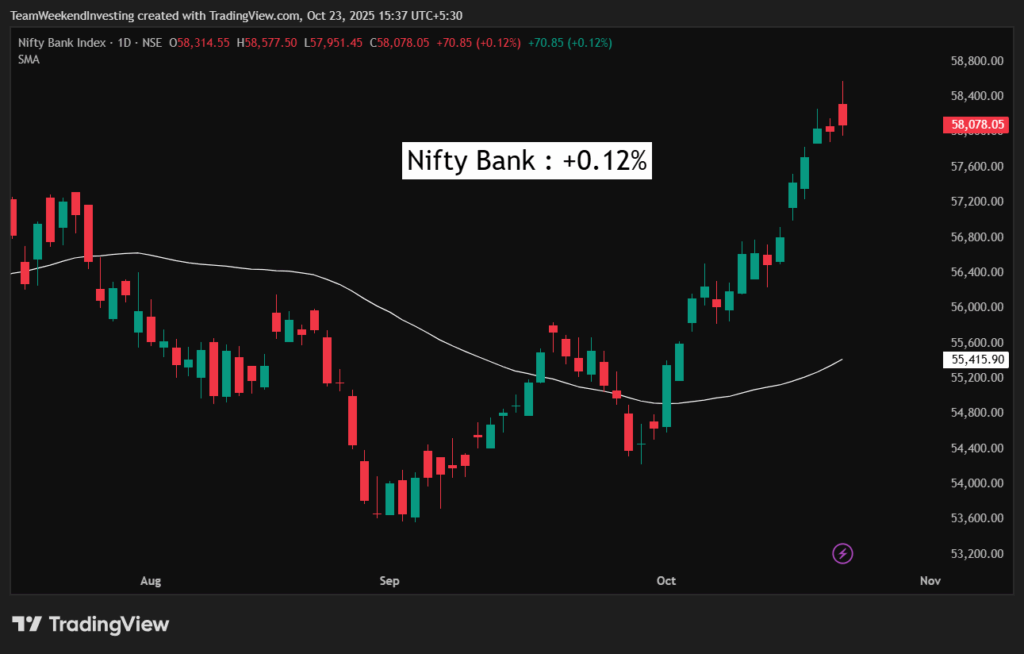
GOLD
Gold has also seen a wild ride recently. After rising sharply from ₹98,000 per 10 grams to ₹1,20,000 in just two months—a massive 25% gain—it has now corrected from ₹1,31,000 to around ₹1,20,000. While that fall might seem steep, it’s important to remember that gold typically moves about 12% in a year. Even after this pullback, gold is still up more than 55–60% for the year, an incredible performance by any measure. Many are calling this the end of the gold rally, but when something rises 60% and drops only 10%, it’s hardly the end of the story. This could simply be a pause before the next leg up. Those waiting for a deeper dip may miss the opportunity to buy if prices stabilize and move higher again.
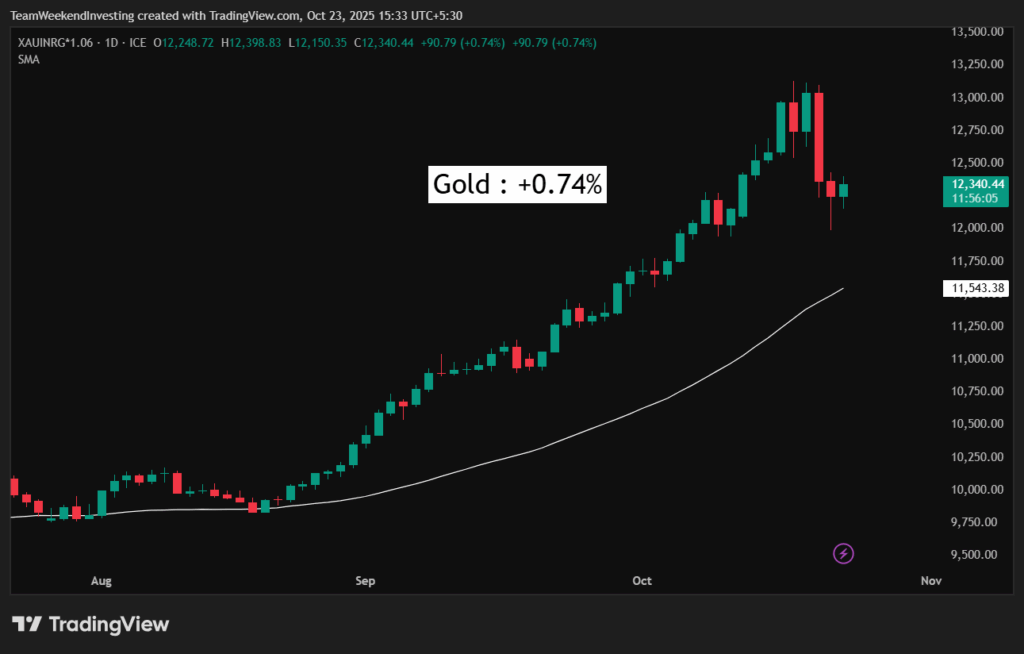
SILVER
Silver too has seen sharp movements, dropping from ₹1,60,000 per kg to ₹1,42,000 and then recovering slightly to ₹1,47,000. Some consolidation in precious metals now seems likely.
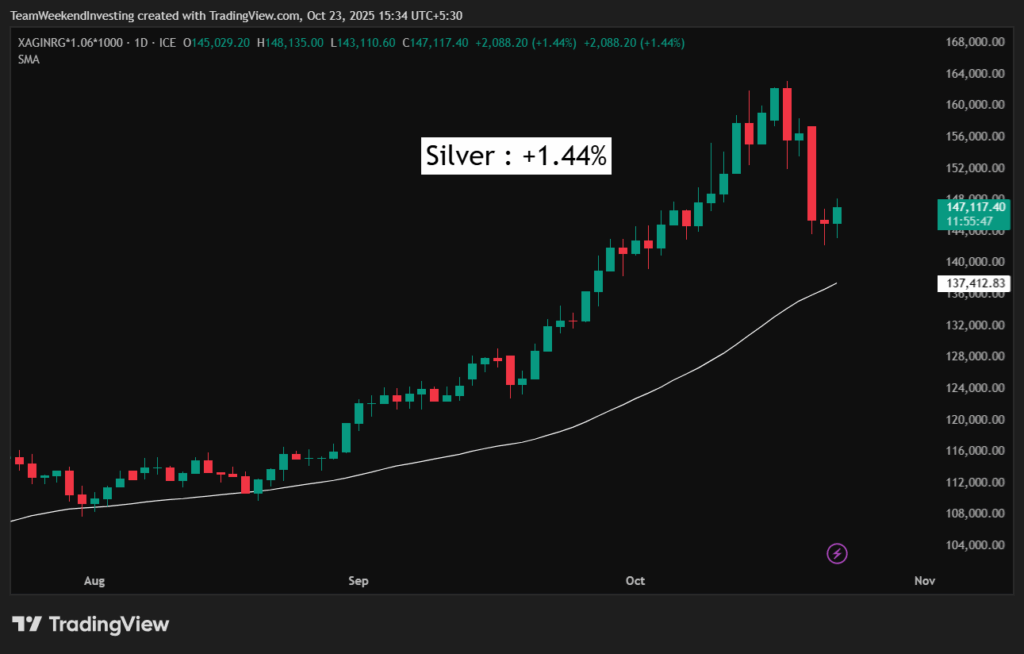
Advance Decline Ratio
The advance-decline ratio of the market was weak throughout the day, with just 205 advancing stocks against 295 declines.
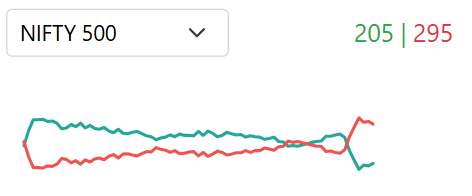
Heat Maps
The heat map was largely red, led by a drop in heavyweights like Reliance, which is now facing margin pressure as it turns away from Russian oil. Bharti Airtel, UltraTech Cement, JSW Steel, and Bajaj Auto also fell.
On the brighter side, TCS, Infosys, and HCL Tech gained on renewed optimism about the Indo-US friendship. Axis Bank and ONGC saw minor gains, while ICICI Bank continued its downward trend following poor quarterly results. In the Nifty Next 50, Adani Power dragged the index down, joined by names like TVS Motors, IOC, HAL, and Canara Bank.
On the other hand, Naukri jumped nearly 4.8% along with Bajaj Holdings and Bharat Rasayan, which rallied strongly after news of a potential stock split and bonus issue.
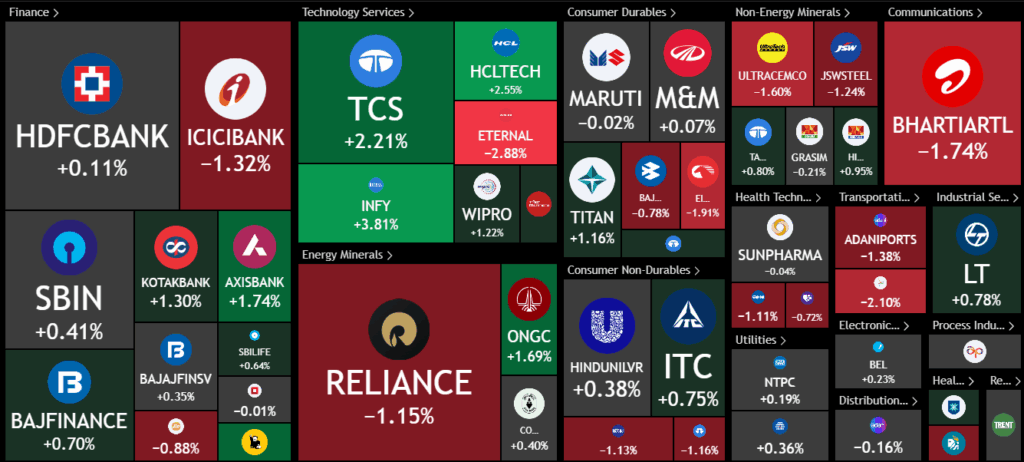
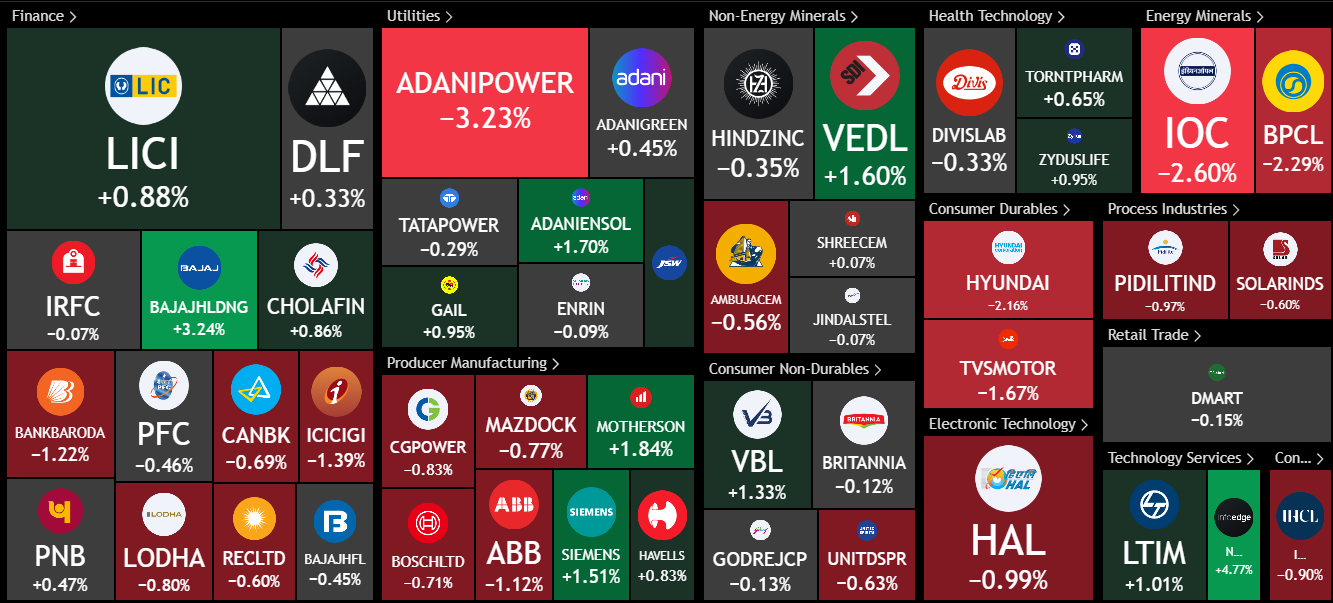
Mover Of The Day
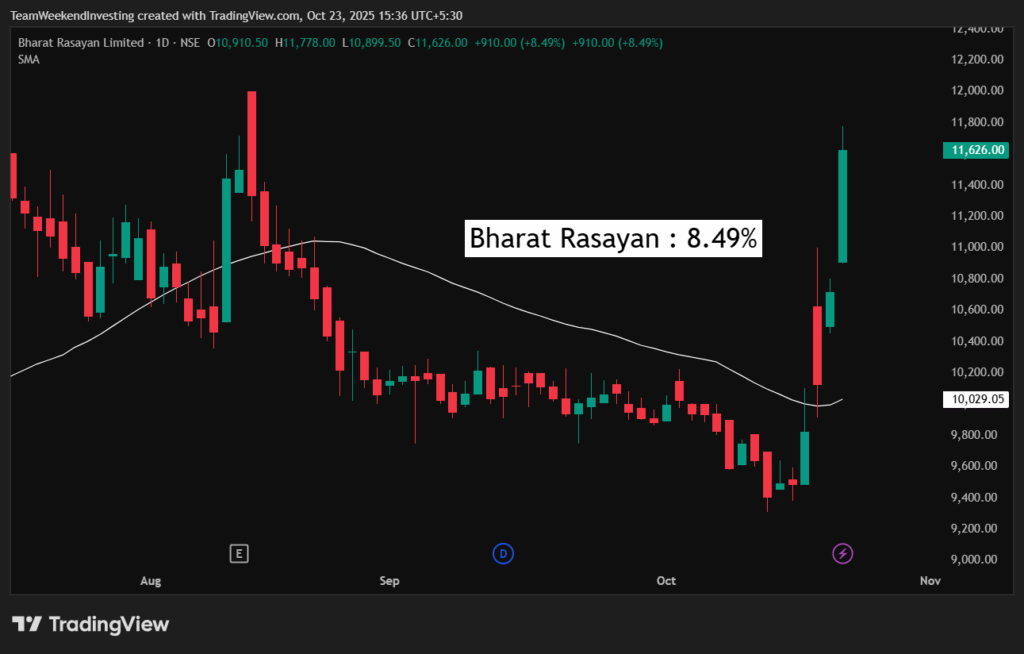
Sectoral Overview
Sectorally, there wasn’t much action. Tourism was down 0.6%, oil and gas fell 0.5%, and infrastructure slipped 0.5% as well. The only notable gainer was IT, up 2.2%, with private banks inching up 0.49%. Infosys, HCL Tech, TCS, and Wipro performed well as the sector closed some gaps on the charts, which often act as magnets for prices.
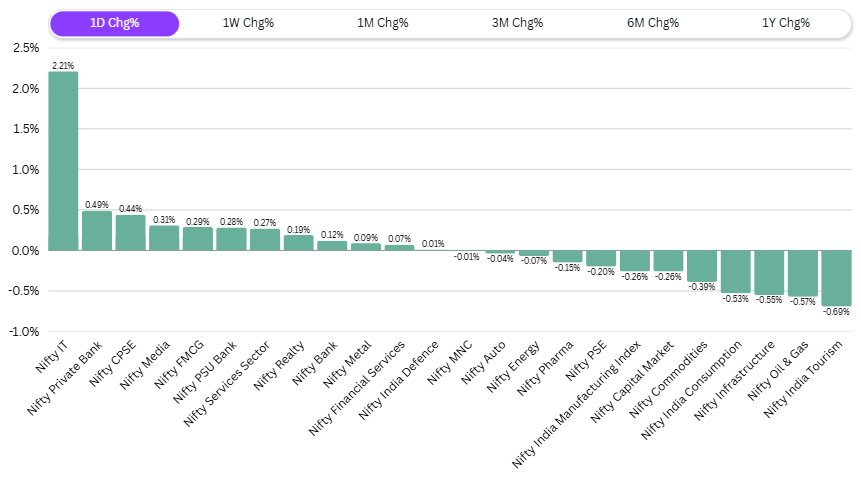
Sector of the Day
Nifty IT Index
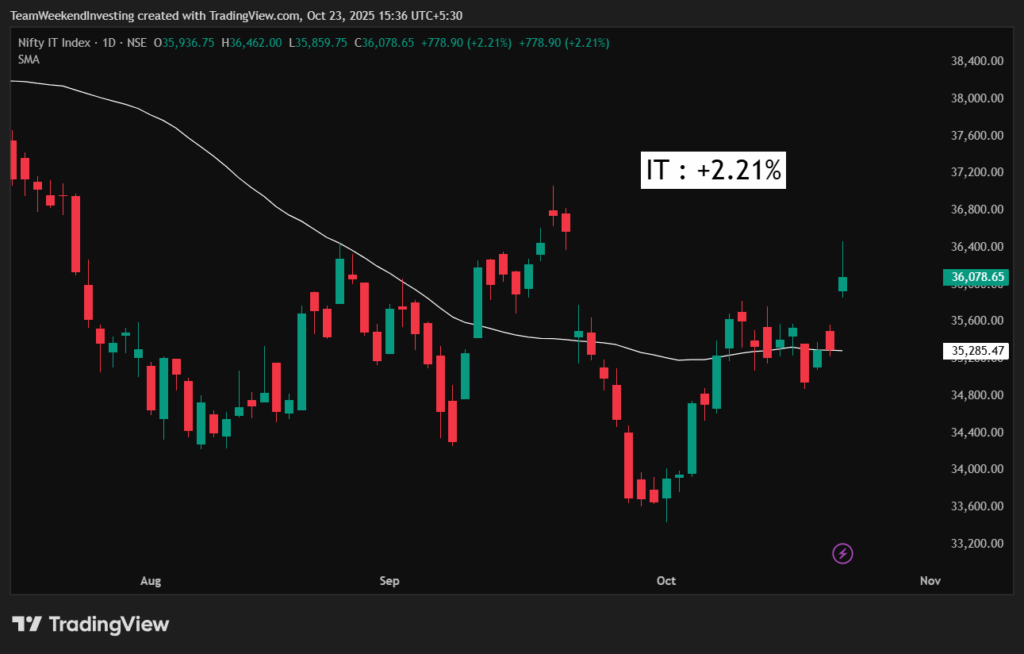

U.S. Market
In global markets, sentiment also turned soft. The S&P 500, Dow Jones, NASDAQ, and Russell 2000 were all down, with Netflix tumbling 10% after a long run-up. Other major US stocks like Texas Instruments, Palantir, AMD, and Intel also fell.
For now, the US markets remain dependent on a handful of mega-cap “Magnificent Seven” stocks, and any weakness there could drag the broader indices lower.
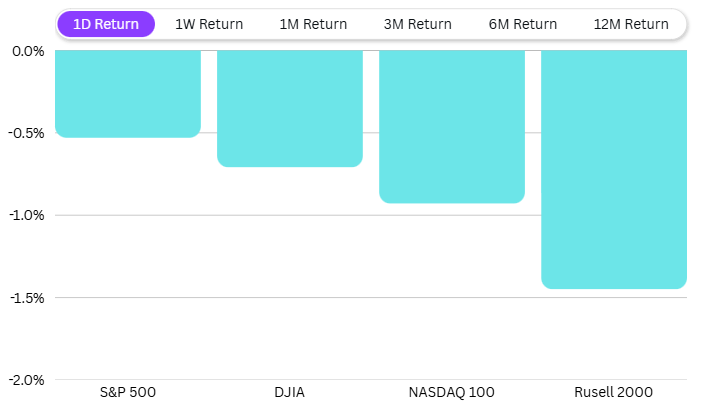
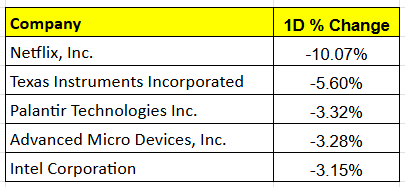
Tweets Of the Day
One major piece of news came from the Reserve Bank of India, which announced that from April 2026, silver will be allowed as collateral for loans from banks and non-bank institutions. This has created a buzz in financial circles, as it adds a new productive use for precious metals held by citizens.
Currently, the RBI allows up to one kilogram of gold (worth about ₹1.2 crore) as collateral and will now permit up to 10 kilograms of silver (worth around ₹15–20 lakh). While the silver allowance is smaller in comparison, it’s still seen as a progressive move that could improve liquidity and credit flow in the economy.
This step will allow individuals holding silver to raise funds against it, and could encourage others to use silver as a collateral alternative to fixed deposits or bank guarantees.
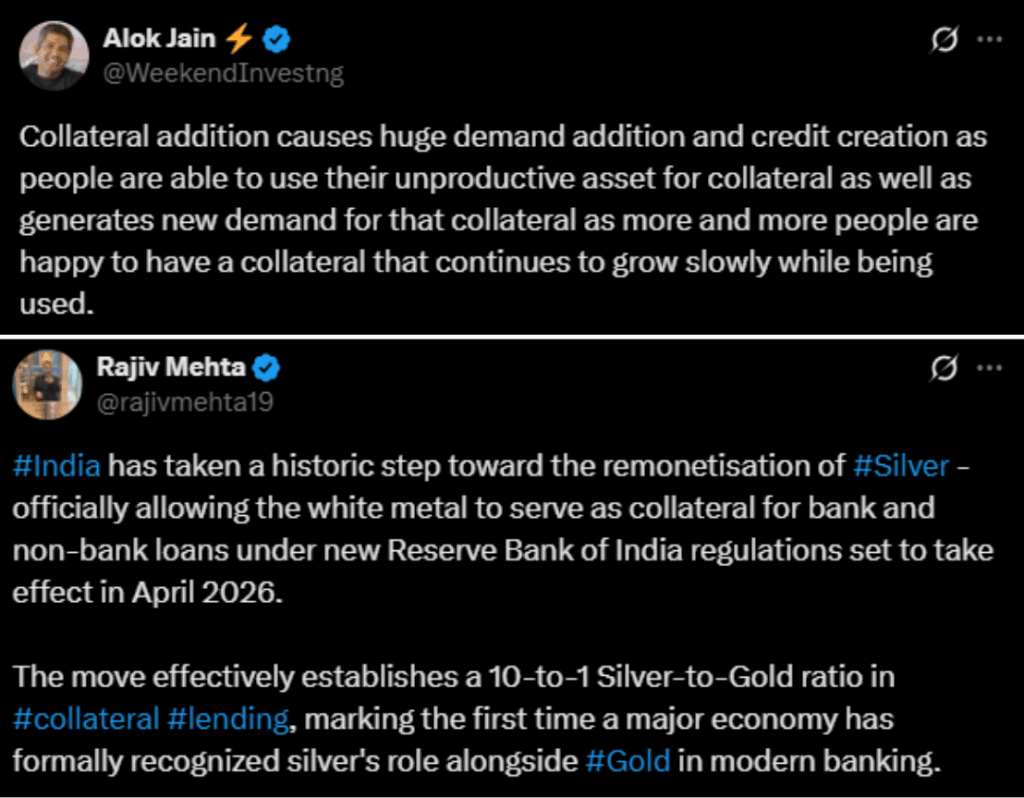
Another topic of discussion was the Securities Transaction Tax (STT). Many veteran investors remember when STT was introduced as a small tax on trades to track market transactions. Initially, it was treated as advance tax, meaning it could be adjusted against total tax payable at the end of the year. But after some misuse by a few bad actors, the government changed the rule in the mid-2000s, treating STT as a cost rather than a tax credit. This has long been viewed as unfair by traders, since it remains a tax but is not treated like one for accounting purposes. There is hope that the Finance Ministry will revisit this issue in the future to restore fairness and transparency.
